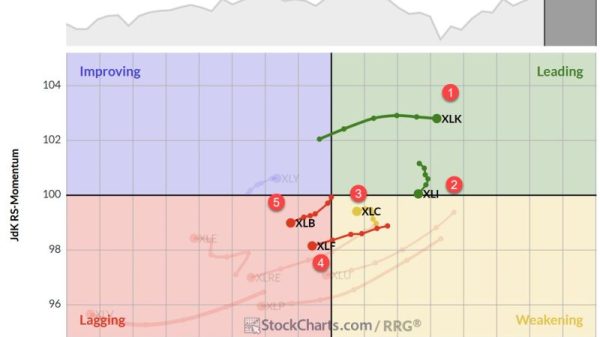Scientists have taken their first glimpse of a sample collected from the near-Earth asteroid Bennu — and stumbled upon a good bit more than they expected.
When they opened the canister containing the sample on September 26, the researchers discovered an abundance of dark, fine-grained material on the inside of the container’s lid and base surrounding the mechanism used to collect the extraterrestrial rocks and soil. That unexpected debris could reveal key insights about the asteroid before the primary sample is analyzed.
The sample’s historic landing in the Utah desert September 24 marked the culmination of NASA’s 7-year OSIRIS-Rex mission, which traveled to Bennu some 200 million miles (320 million kilometers) from Earth, touched down on the asteroid and then flew back by Earth for the sample drop. (Total trip distance: some 3.86 billion miles.)
The mission team whisked away the canister the day after its arrival to NASA’s Johnson Space Center in Houston, which has a clean room specially built for careful analysis of the cosmic sample.
What the Bennu sample could reveal
Asteroids are remnants from the formation of the solar system, offering insights into what those chaotic, early days were like as the planets formed and settled into place. But near-Earth asteroids also pose a threat to our planet, so understanding their composition and orbits is key to unlocking the best ways to deflect space rocks on a collision course with Earth.
When OSIRIS-REx briefly used its TAGSAM, or Touch-and-Go Sample Acquisition Mechanism head, to disturb the surface of Bennu and collect a sample in October 2020, it gathered so much material that particles could be seen slowly drifting off into space before the head was stowed in the canister.
This led scientists to believe they might be able to do a quick analysis of any material they discovered upon opening the canister — and there’s plenty of it before they even reach the bulk of the sample, located within the mechanism head, which means the scientists will need to take their time to collect all of the material.
“The very best ‘problem’ to have is that there is so much material, it’s taking longer than we expected to collect it,” said Christopher Snead, deputy OSIRIS-REx curation lead, in a statement.
“There’s a lot of abundant material outside the TAGSAM head that’s interesting in its own right. It’s really spectacular to have all that material there.”
The actual asteroid sample won’t be revealed until October 11 in a live NASA broadcast. The TAGSAM head will be moved to a new specialized glovebox for careful disassembly, unveiling the sample inside.
Meanwhile, the quick-look analysis of a sample taken from outside the TAGSAM head is underway, and it could offer initial findings from the material collected from Bennu.
“We have all the microanalytical techniques that we can throw at this to really, really tear it apart, almost down to the atomic scale,” said Lindsay Keller, OSIRIS-REx sample analysis team member, in a statement.
The team will use scanning electron microscopes, X-rays and infrared instruments for a first examination of the material collected from Bennu.
Together, the instruments will provide scientists with an understanding of the sample’s chemical composition, detect any hydrated minerals or organic particles, and reveal any abundance of specific types of minerals present on the asteroid.
“You’ve got really top-notch people and instruments and facilities that are going to be hitting these samples,” Keller said.
The initial analysis will help researchers have a better idea of what to expect from the bulk sample collected from Bennu.
Scientists believe that asteroids like Bennu might have delivered necessary elements such as water to Earth early in our planet’s formation — and studying the pristine sample could answer lingering questions about the origins of our solar system.
Meanwhile, the spacecraft that delivered the sample, now named OSIRIS-APEX, is on its way to study the near-Earth asteroid Apophis, which will come close enough to Earth in 2029 to be seen by the naked eye.






































